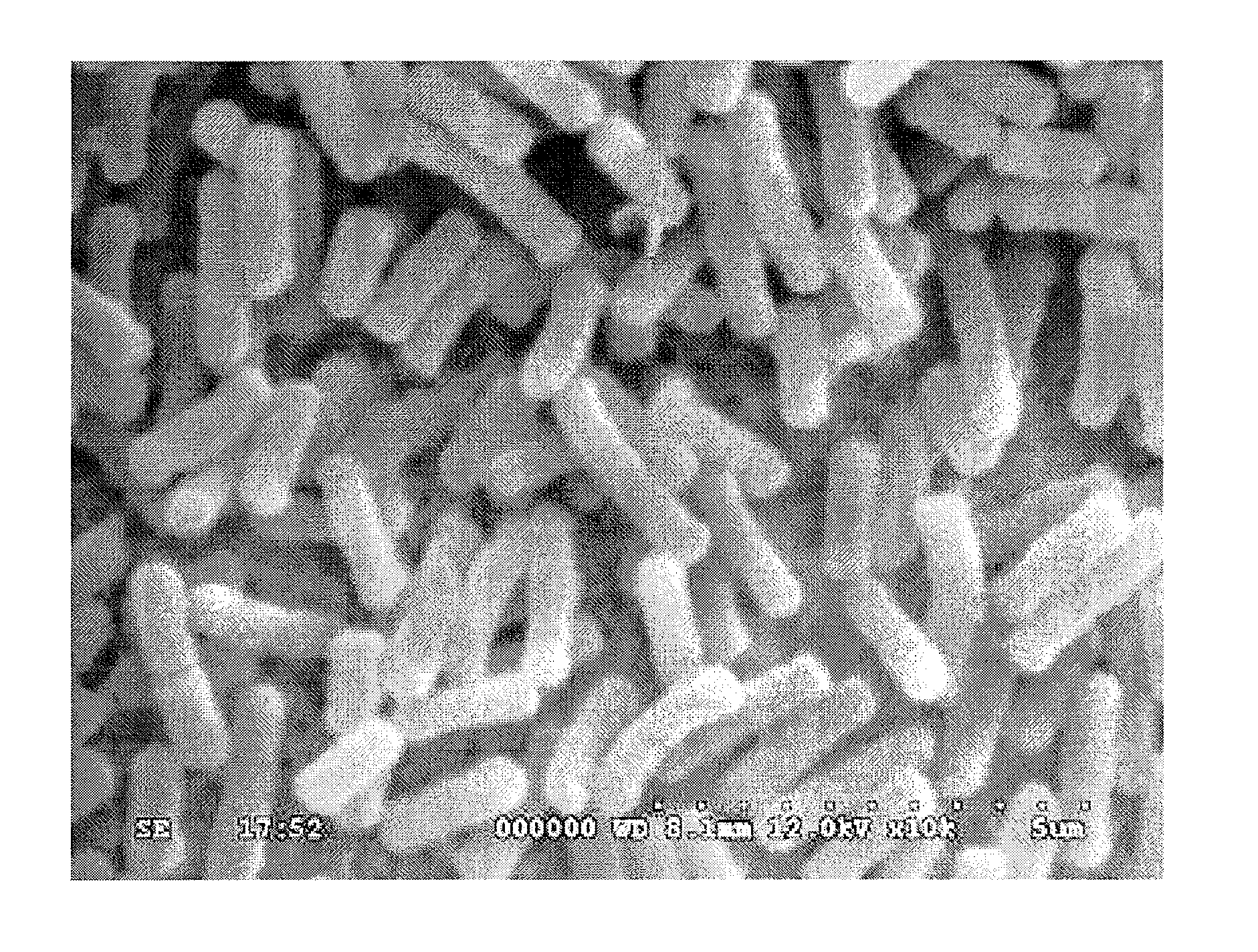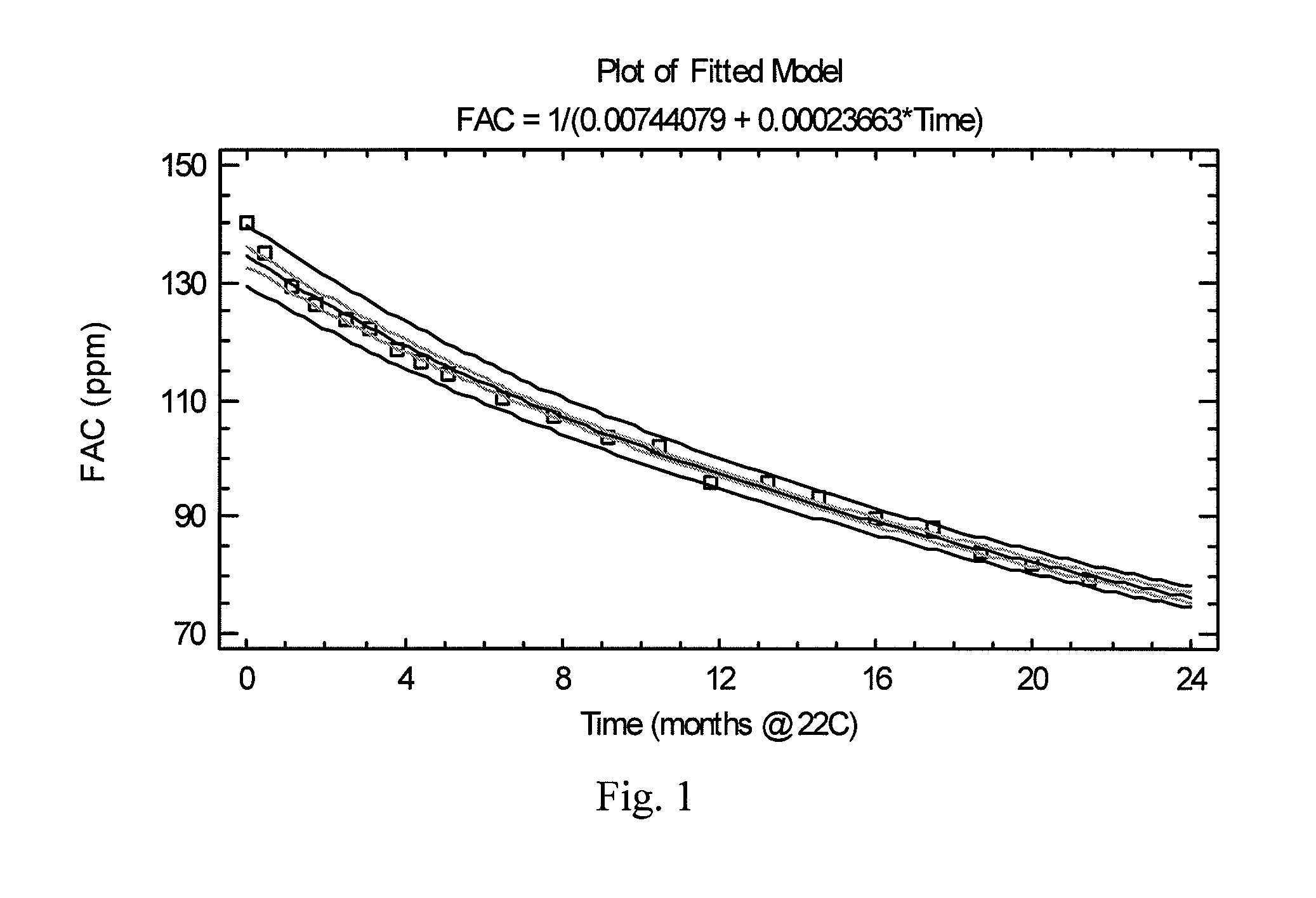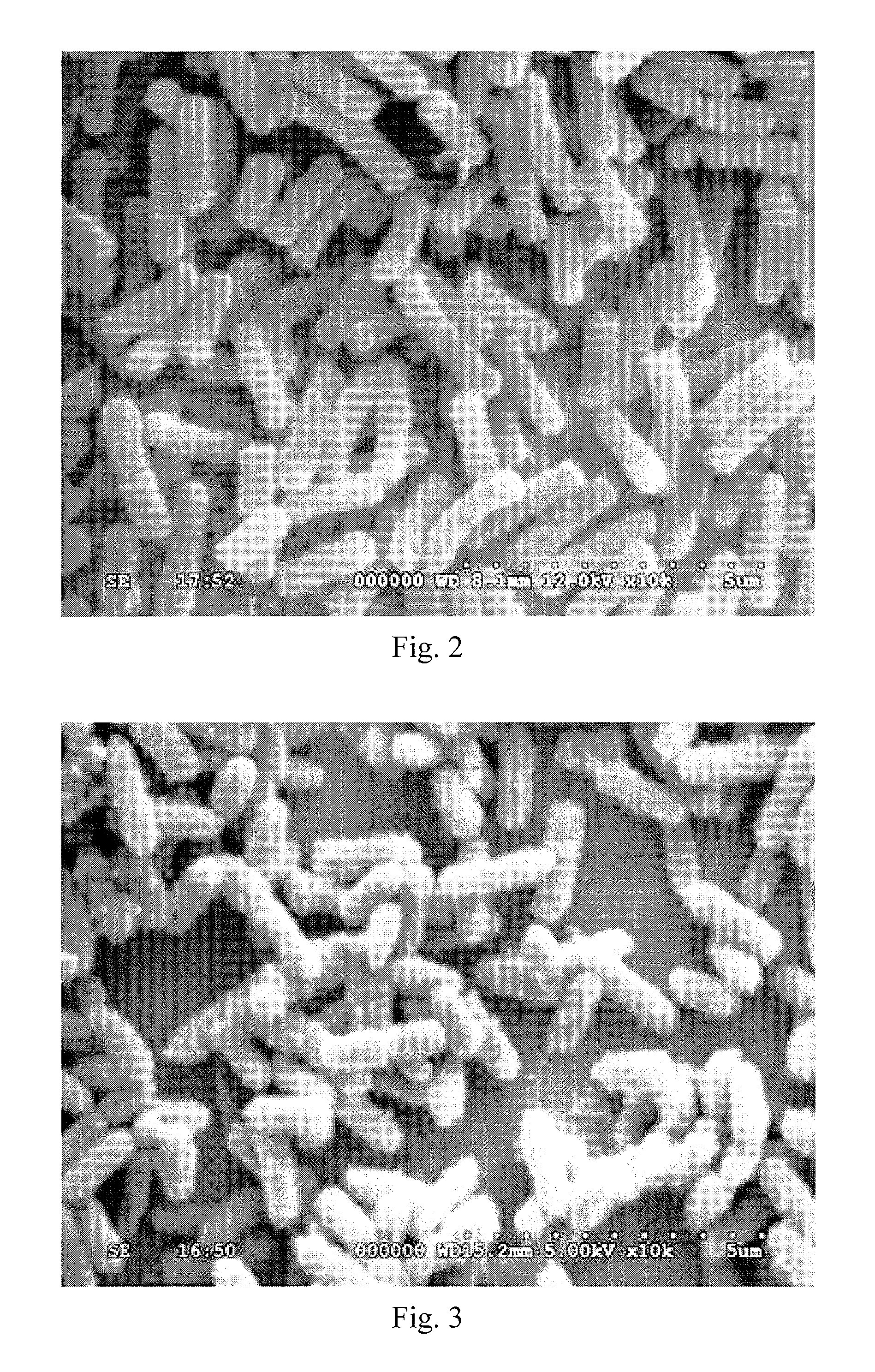Solution containing hypochlorous acid and methods of using same
a technology of hypochlorous acid and solution, applied in the direction of antibacterial agents, drug compositions, aerosol delivery, etc., can solve the problems of limiting the effectiveness of wound treatment therapies, limiting the shelf life of fac water solutions, and not promoting microbial resistance or toleran
- Summary
- Abstract
- Description
- Claims
- Application Information
AI Technical Summary
Benefits of technology
Problems solved by technology
Method used
Image
Examples
example 1
[0057]This example demonstrates one embodiment of the present invention wherein 1 liter of low pH antimicrobial solution is produced by a chemical process comprising the addition of chlorine to a buffer solution.
[0058]1.0 g sodium phosphate monobasic (NaH2PO4) and 1.08 g sodium phosphate dibasic (Na2HPO4,7H2O) is added to 1 liter of purified water (RO, DI, or distilled water) and stirred to provide a dilute buffer solution with a pH of approximately 8.0. Chlorine gas (Cl2) is slowly bubbled into the dilute buffer solution until the free available chlorine content reaches a level of 150 mg / L. The resulting low pH antimicrobial solution has a pH of 5.6.
example 2
[0059]This example demonstrates another embodiment of the present invention wherein an electrochemical process is employed to produce a low pH antimicrobial solution.
[0060]A dilute buffer solution is prepared by adding sodium phosphate monobasic (NaH2PO4) and sodium phosphate dibasic (Na2HPO4) to 10 liters of process water with stirring. Amounts of the phosphate salts to be added to the process water, depending on their hydration, are provided below:
[0061]Sodium phosphate monobasic (one of the following):[0062]1. 1430 g NaH2PO4,[0063]2. 1645 g NaH2PO4·H2O, or[0064]3. 1859 g NaH2PO4·2H2O
[0065]Sodium phosphate dibasic (one of the following):[0066]1. 64 g Na2HPO4 [0067]2. 121 g Na2HPO4·7H2O[0068]3. 161 g Na2HPO4·12H2O
[0069]It should take between 5-10 minutes for the salts to dissolve. After the salts dissolve, the solution should be clear with no sign of particles and the pH of the solution should be approximately pH 4.7.
[0070]The buffer solution is added separately to cathode water an...
example 3
[0072]This example demonstrates the stability of the low pH antimicrobial solution of the present invention. One lot of the low pH antimicrobial solution produced above in Example 2 (i.e., via the electrochemical process) was subjected to stability testing at 40° C. one (1) sample per lot; one (1) sample per time point. The solution was packaged in 120 mL PET containers with a finger pump spray head that was secured in the bottle at the time of production. Samples were placed in an Environmental Test Chamber set at 40° C. ±2° C. for accelerated testing. Lot release data represented T=0. Each data point was represented by an unopened bottle.
[0073]A total of forty bottles, with finger spray caps, were tested at various time points in order to establish an accelerated shelf-life determination. One bottle was tested at each time point. Each bottle was tested for free available chlorine content and pH at designated time points. Samples were tested and analyzed to meet the following accep...
PUM
| Property | Measurement | Unit |
|---|---|---|
| diameter | aaaaa | aaaaa |
| pH | aaaaa | aaaaa |
| pH | aaaaa | aaaaa |
Abstract
Description
Claims
Application Information
 Login to View More
Login to View More - R&D
- Intellectual Property
- Life Sciences
- Materials
- Tech Scout
- Unparalleled Data Quality
- Higher Quality Content
- 60% Fewer Hallucinations
Browse by: Latest US Patents, China's latest patents, Technical Efficacy Thesaurus, Application Domain, Technology Topic, Popular Technical Reports.
© 2025 PatSnap. All rights reserved.Legal|Privacy policy|Modern Slavery Act Transparency Statement|Sitemap|About US| Contact US: help@patsnap.com



